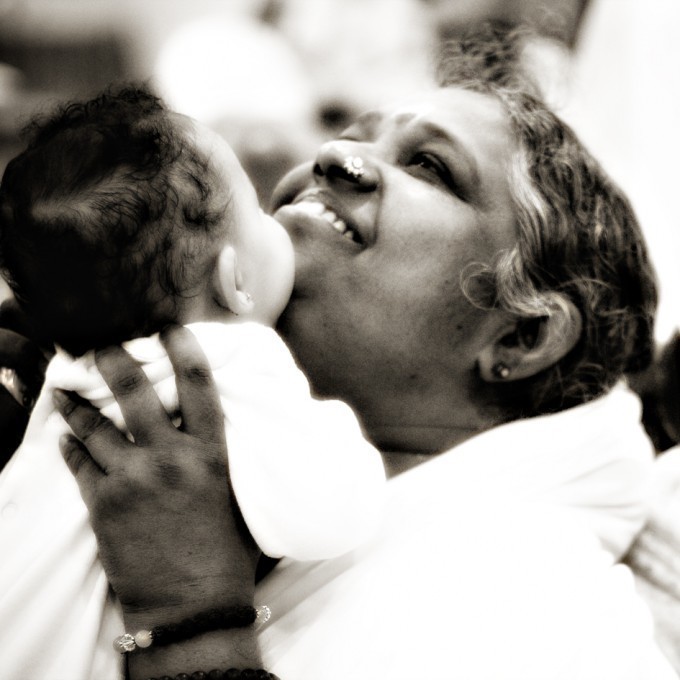The Mystery of the Hugging Saint
Illustrated by AUDEBAUD JEAN LOUIS
 She is called Amma, and she gives awesome hugs.
She is called Amma, and she gives awesome hugs.
Mata Amritanandamayi Devi, now more commonly known by the name for “mother” in many native languages of India, travels the world giving the simplest and most basic kind of comfort: hugs. Amma’s hugs are reputedly a religious experience—hundreds of thousands of people have waited in line for endless hours for a minute or two of contact with this famed woman. She has even been dubbed a “hugging saint” by her followers, and has started multiple charitable organizations worldwide.
There are many questions about Amma, though: why hugging? And what makes her hugs apparently so much more powerful than the hugs of anyone else?
There is a theory in psychology called the Love Languages Theory. Its main premise is that there are different methods, or “languages,” for showing love and affection of all kinds towards our fellow humans. These five methods are: touch, or physical contact in the sense of hugging and touches on the shoulder; words, or praise and verbal reassurance; quality time, or dedicating time to being with another; receiving, such as the receipt of presents or goods; and acts of service, or helping people with chores and responsibilities.
The Love Language Theory states that we need all five of these love languages abundantly in early childhood, and after about the age of 5, our love language is narrowed down to one or two methods, and it is in this way that we prefer to be cared for. For example, someone who just aced a test whose love language is touch would be more gratified with a congratulatory hug than with an “awesome job!”
This theory could point to why Amma’s hugs are so powerful: the people who receive them are especially sensitive to touch. But could it really be that all these people who line up to hug Amma are touch people? Or is there something more to the situation?
It does appear to be rather reductive to assume that all those who visit Amma in India and on her tours around the world would fall into the category of touch people; likewise, to assume that there is nothing special about her hugs, other than that they are cozy. What other elements could be involved?
In Hinduism, the tradition of darshan refers to contact with the sacred in different forms. It is said that a hug from Amma can impart darshan, and carries immense healing powers as well.
Our society tends to balk at the idea that there could be anything holy about most everything—and certainly the suggestion here is not that Amma has any mystical powers. But for those seeking solace, of any creed or race, gender or nationality, is there not something powerful in the idea that someone has no qualms in giving you a hug and focusing all their attention on you and your problems? It speaks volumes to our profound desire for human contact. (Also, perhaps, to our self-absorption.)
This desire is not unique to our generation, of course. Certainly a woman like Amma could have been of ample use in past centuries; her popularity is not necessarily a comment on whether or not technology has forced a divide between people. But we live in a time where a woman who is so inclined can travel the world and hug people purely to make them feel better, and not fear excessively the judgment of society.
Is this something to embrace (if you’ll excuse the pun)? That depends on the individual to decide. The otherworldly nature of the hug would ostensibly rely upon your degree of spirituality, but few could deny that there are some days where you just need a hug.

Comments
No comments posted yet.
You have to be registered and logged in in order to post comments!